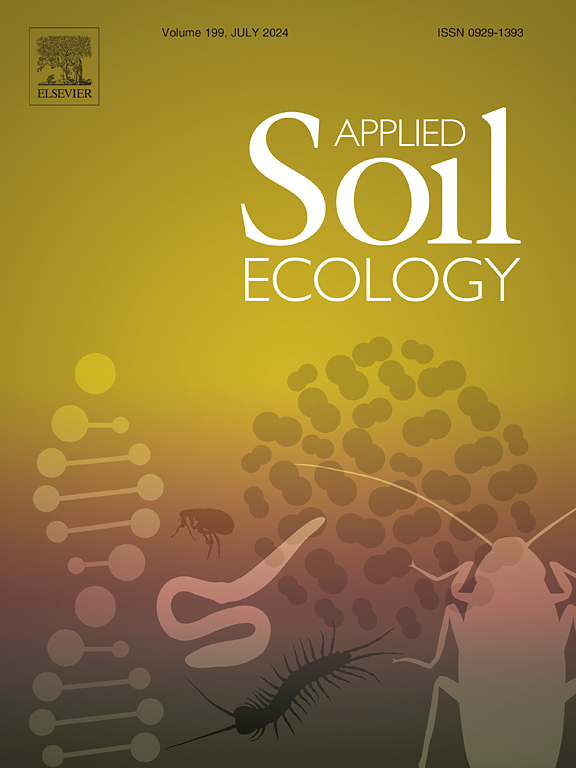Sand dune fixation enhances the contribution of microbial necromass carbon to soil organic carbon: A case study of Mu Us Sandy Land in China
IF 5
2区 农林科学
Q1 SOIL SCIENCE
引用次数: 0
Abstract
Restoration of vegetation, soil, and biodiversity is key crucial for managing desertified ecosystems; however, whether desertification restoration promotes the accumulation of microbial necromass carbon (NC) remains unclear. In this study, four dune types (mobile, semi-mobile, semi-fixed, and fixed) were selected to represent different desertification restoration stages, and the accumulation mechanism of microbial NC and its contribution to soil organic carbon (SOC) were analyzed. The results showed that since the plant diversity, soil water content, and microbial activity of semi-mobile, semi-fixed, and fixed dunes were higher than those of mobile dunes, the SOC in semi-mobile (2.63 g kg−1), semi-fixed (2.98 g kg−1), and fixed (3.82 g kg−1) dunes were significantly higher than that in mobile dune (0.98 g kg−1). Moreover, sand dune fixation promoted microbial NC accumulation and increased microbial NC/SOC ratio but decreased fungal NC/bacterial NC ratio. In addition, our study showed that plant diversity is the main factor influencing microbial NC, which has direct and indirect effects on microbial NC accumulation. In conclusion, sand dune fixation enhances microbial NC accumulation and its contribution to SOC, and the change is driven mainly by plant diversity. This study enhances our understanding of the microbial NC accumulation mechanism during dune restoration.
沙丘固定增强微生物坏死体碳对土壤有机碳的贡献——以毛乌素沙地为例
植被、土壤和生物多样性的恢复对于管理荒漠化生态系统至关重要;然而,荒漠化恢复是否促进微生物坏死块碳(NC)的积累尚不清楚。选择移动、半移动、半固定和固定4种沙丘类型代表沙漠化恢复的不同阶段,分析微生物NC的积累机制及其对土壤有机碳(SOC)的贡献。结果表明:由于半移动、半固定和固定沙丘的植物多样性、土壤含水量和微生物活性均高于移动沙丘,因此,半移动沙丘(2.63 g kg−1)、半固定沙丘(2.98 g kg−1)和固定沙丘(3.82 g kg−1)的有机碳含量显著高于移动沙丘(0.98 g kg−1)。此外,沙丘固定促进了微生物NC积累,提高了微生物NC/SOC比值,但降低了真菌NC/细菌NC比值。此外,我们的研究表明,植物多样性是影响微生物NC的主要因素,对微生物NC的积累有直接和间接的影响。综上所述,沙丘固定增加了微生物NC积累及其对有机碳的贡献,其变化主要由植物多样性驱动。本研究增强了我们对沙丘恢复过程中微生物NC积累机制的认识。
本文章由计算机程序翻译,如有差异,请以英文原文为准。
求助全文
约1分钟内获得全文
求助全文
来源期刊

Applied Soil Ecology
农林科学-土壤科学
CiteScore
9.70
自引率
4.20%
发文量
363
审稿时长
5.3 months
期刊介绍:
Applied Soil Ecology addresses the role of soil organisms and their interactions in relation to: sustainability and productivity, nutrient cycling and other soil processes, the maintenance of soil functions, the impact of human activities on soil ecosystems and bio(techno)logical control of soil-inhabiting pests, diseases and weeds.
 求助内容:
求助内容: 应助结果提醒方式:
应助结果提醒方式:


